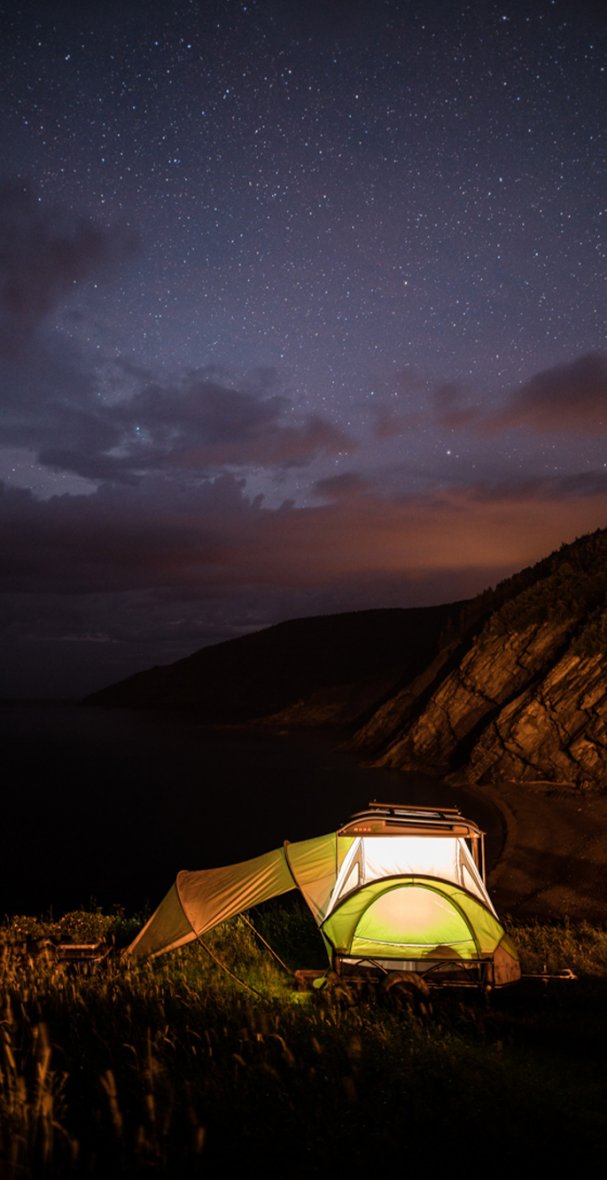
GO
field notes
GO TIPS!
HOW TO PREVENT CONDENSATION INSIDE YOUR TENT
HOW TO PREVENT CONDENSATION INSIDE YOUR TENT
The GO camping trailer’s tent is made out of a 220 denier rip-stop Nylon fabric that is fully waterproof. Since the material is waterproof you do not need an additional rainfly for the GO. We designed the GO with multiple ventilation points to help keep the inside of the GO well ventilated because no one wants to wake up to a wet tent.
Here are our three main tips to avoid tent condensation.
- Ventilate! (and ventilate some more!)
- Pick an optimum place to set up your GO (answer: under trees and away from water sources if possible)
- Minimize the sources of additional moisture inside your tent
Video: GO tent VentilaTION
Here’s a quick overview of the GO’s ventilation system, so you know how it works.
Strategy No. 1: Ventilate as much as possible
Air inside the GOs tent is almost always more humid than the surrounding air, so you should be sure to ventilate to prevent condensation. The GO is designed to allow for air circulation, but here are some best practices for optimal ventilation.
- Leave the bottom side vents of the GO unzipped so air can circulate. These can be left open even in the rain since they are covered by the bed panels.
- Open the side windows as much as possible. Since these have double zippers you can choose a direction to leave an area open – this is perfect for rainy conditions so you can still leave part of the GO’s windows unzipped in case of rain.
- Open the windows on the door too – it is designed with integrated ventilation points.
- Make sure nothing is obstructing the airflow through the top of the tent – You can take down the 2 white bed/table panels from the ceiling to allow for more air circulation.
It’s rare for your tent tot be totally dry come morning, but if you follow these tips, most of the moisture should stay on the outside—where it belongs.
Strategy No. 2: Set up your GO in a dry environment
Camping near a river of stream can make for some nice scenery, but these areas are more likely to create conditions for condensation to occur.
Strategy No. 3: Minimize the additional moisture sources inside your GO
Moisture in a tent comes from three places:
- The existing moisture level in the air itself (humidity)
- Moisture added to your inner airspace by each breath you take at night
- Moisture added by any wet items you might have inside your tent
What to do if there is condensation?
If you wake up in the morning and find water on the interior of the tent walls or if you have any area that have accumulated in to puddles, use an absorbent towel to dry it out. The “gut” reaction when you see water inside your tent is “my tent is leaking!” but the culprit for water inside the tent is usually condensation. To troubleshoot if your tent has a leak, when you get home from a camping trip, set up your GO and spray the GO with water hose to simulate rain. (Make sure you are not spraying directly through the mesh vent area at the top of the GO as rain could never come in at that angle). If your GO is dry after the water test then you know condensation was the reason for water and your GO’s tent fabric is functioning properly.
We do offer a tent maintenance kit to make sure your tent is retaining its water repellency. When water comes in contact with the outside of your tent, it should bead up and run off. If you notice it is not repelling water as well as it was, it may be time to use the water repellency spray from the kit.
